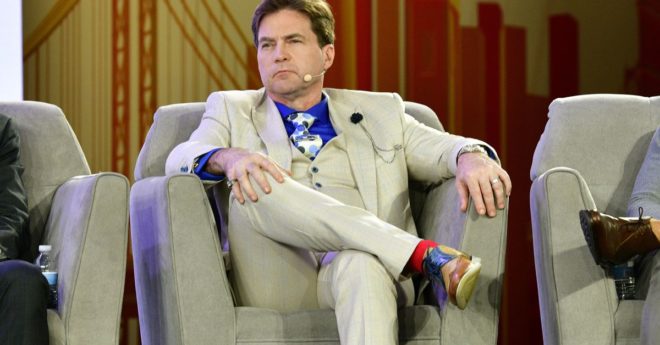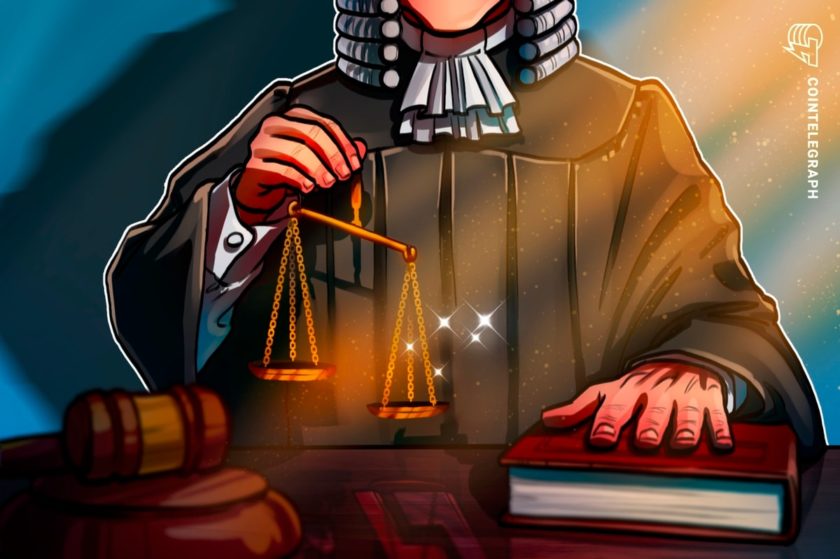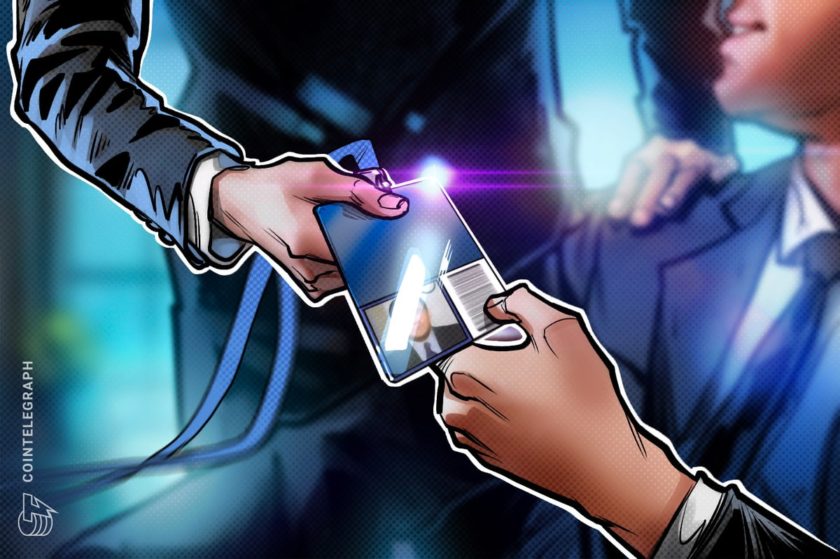MIAMI — On Monday, Craig Wright, wearing a cream-colored suit and purple tie, concluded his fourth day of testimony in the civil suit launched against him by the estate of his former best friend and alleged business partner, David Kleiman.
Ira Kleiman, David’s brother, and the attorneys representing the estate posit that David and Wright worked together to “invent” Bitcoin and mine a hoard of over 1.1 million coins, worth over $60 billion today. They also accuse Wright of stealing David’s share of the intellectual property rights and profits through a series of legal maneuvers and forgeries after David’s death in 2013.
In court, Wright said that he’d written the famous white paper alone and asked David Kleiman for help cleaning it up.
“If it had been a 60-page paper full of academic wankery, no one would read it.”
Plaintiffs say the two men were partners in a company called W&K Info Defense Research, LLC, which they used to mine and “develop” Bitcoin together. But Wright says he was never involved in W&K, and that it was a venture between his ex-wife Lynn Wright and David Kleiman.
Read more: Kleiman v. Wright: Bitcoin’s Trial of the Century Kicks Off in Miami
Nevertheless, after David’s death, Wright said he offered Ira Kleiman $12 million of his own money at one point to take on a director role at one of his companies. But Kleiman had refused the offer. Wright claimed Ira Kleiman would have been paid $30,000 per month for about 30 hours of work.
“That’s more than most people ever imagine, more than most people on this earth would dream about, and he turned it down,” Wright said. Instead of helping run a company, “[Ira] wanted to strip it, loot it, take it, basically eviscerate it so he could sit there drinking mai tais and not actually working,” Wright said.
Wright said in Monday’s testimony that he grew up with a single mother working three jobs, values hard work and won’t give handouts.
Freedman introduced documents purporting to show that Wright had “looted the company of all the intellectual property” to ice out Ira Kleiman.
“There was no looting,” Wright retorted. W&K owned, and still owns, software rights, which Ira Kleiman could exploit if he had the know-how, got investors and hired people, Wright said. “He doesn’t know what to do.”
Wright contrasted that with his own claims of technical and financial know-how.
“On a good day, I have written the equivalent of a master’s thesis,” Wright said. “I’m enrolled in 19 different universities; one of them is Harvard… I actually wrote three papers last night.”
Freedman tried to show Wright contradicting himself. At one point he asked whether Dave Kleiman had mined bitcoin in 2009. On the stand, Wright said no, because Dave was in the hospital at that time. Freedman showed a Slack message in which Wright said Dave had mined it. At every such turn, Wright attempted to explain away discrepancies, suggesting that Kleiman’s legal team was misunderstanding or intentionally distorting the context.
Casting doubt
Monday’s testimony capped Wright’s appearance on the stand, which began last week. Throughout it, Freedman focused his attack on Wright’s alleged history of theft, forgery and deceit.
For example, on November 9, through a series of emails between Wright and others, including Ira Kleiman and Wright’s associates, Freedman attempted to paint a picture of Wright and David Kleiman’s history of partnership, and Wright’s subsequent scramble to sweep it under the rug after David’s death, ostensibly because he realized he could keep Satoshi’s crown – and what the plaintiffs are calling “Satoshi’s hoard” of bitcoins – for himself.
Wright, who is known for his combative nature, was unyielding on the stand. Despite being presented with piece after piece of evidence that contradicted his explanation of events, Wright attempted to explain them away with claims that he had been hacked, that he had been misunderstood (which the defense has blamed on Wright’s autism), or that he’d simply been exaggerating David Kleiman’s role in the “creation” of bitcoin to give his dead friend a “legacy.”
Read more: In Craig Wright Trial, Plaintiffs Lay Out Pattern of Fraud, Deceit and Hubris
Though Wright has repeatedly failed to prove that he controls the bitcoins associated with Satoshi Nakamoto – and several experts have cast doubt on the existence of some of the bitcoins in question entirely – Wright’s notoriety means the case is being watched closely by many in the crypto community.
What does a partnership entail?
Importantly, it is the alleged partnership between David Kleiman and Wright – not the identity of Satoshi Nakamoto – that is at the heart of this civil trial.
Last week, attorneys for the plaintiffs showed the jury dozens of emails between Wright and Ira Kleiman in 2014 where Wright refers to David as his business partner, as well as messages between Wright and other associates including an Australian software salesman named Mark Ferrier and a former business associate, Robert MacGregor, where Wright calls David his business partner.
While he was on the stand, Wright frequently defended against the implications contained within these emails by claiming that he meant something different by “partner” than what Kleiman and his attorneys understood the word to mean. His defense has pointed to his diagnosis with autism to explain his purported tendency to be overly literal and difficult to understand.
Wright also claimed that he exaggerated his claims in emails to David Kleiman’s family and colleagues to build a “legacy” for his friend.
“I exaggerated because Dave had no one remembering him, and he was the most important person in my life for many years,” Wright tearfully told the jury on Nov. 9.
Wright also claimed that several other emails referring to David Kleiman as his business partner were either falsified by an unknown hacker or written by wayward staff at one of his numerous companies with access to his email accounts.
Wright said that his staff often “took dictation” from him, as well as transcribed his handwritten notes for emails and blog posts. During his testimony last week, Wright insinuated that one of them could have added incorrect details about his and David Kleiman’s alleged partnership.
Issues with the Australian Tax Office
Wright also pointed the finger at “hackers” when asked to explain why, in numerous documents from the Australian Tax Office (ATO) – ranging from emails to contracts to transcripts of conversations with government officials – he referred to David Kleiman as his business partner.
When asked specifically about a transcript of a conversation on Aug. 11, 2014, between Wright, his attorney, and the ATO, Wright refused to authenticate the document.
“That never happened,” Wright said of the 40-plus page government transcript provided by the ATO.
Wright told the jury that the ATO had been hacked, and accused the officials investigating him in 2014 of forging documents to further a “witch hunt” against him in an attempt to squash his company, Coin-Exch. He also claimed that the lead ATO official on the case, Andrew Miller, had been fired, and that Miller’s colleague Dave McMaster had also been fired, “or at least sent to Papua New Guinea which is about the worst place you can be sent in Australia.”
Freedman asked Wright why, if his claims were true, he had been unable to provide any proof that the ATO had taken disciplinary actions against the investigators and dropped the charges against him.
Wright simply stated that he had provided proof, which Freedman denied.
A complex web of shell companies emerges
Wright’s troubles with the ATO began in 2014, after he sued W&K for its contents, including intellectual property, which was then transferred to a company controlled by Wright.
During Wright’s four days on the stand, a complex web of companies and shell companies with convoluted ownership structures was revealed, making it difficult to follow the trail of money, bitcoins and intellectual property as they traveled from company to company as reported to the Australian tax authorities.
Freedman showed Wright numerous documents that listed Wright as a director, a representative and a shareholder of W&K while Wright steadfastly maintained that he was never any of those things. Instead, he insisted that W&K was a partnership between his ex-wife Lynn Wright and David Kleiman, not between David and himself.
Wright explained his signature on various W&K documents as being “the agent of a director” and told Freedman that he was merely “standing in the shoes of Lynn Wright who was standing in the shoes of W&K.”
In at least one instance, Wright told Freedman that his signature on a tax document, signed “Craig Steven Wright”, was not for himself, the person, but for an entity named “Craig Steven Wright” owned by Lynn Wright that he was merely a representative of.
Adding to the confusion during Wright’s testimony was the structure, ownership, and contents of the mysterious “Tulip Trusts” (which some internet sleuths have even questioned the existence of). Wright told the jury that the plaintiffs believe the Tulip Trust contains bitcoins jointly mined by David Kleiman and Wright, when really it just contains Wright’s notes and testnet bitcoins worth nothing.
A pattern of alleged forgery
Wright has long been accused of faking documents, including editing and backdating emails and messages, to support his claims that he is Satoshi.
Jonathan Warren, the creator of the messaging app Bitmessage, testified via pre-recorded video deposition last week that screenshots of logs of bitmessages purportedly between David Kleiman and Craig Wright discussing the creation of the Tulip Trust must have been forged because the messages’ sent date predated the public availability of Bitmessage by several months.
Wright was also accused by Ira Kleiman of faking signatures, including David Kleiman’s signature on an agreement giving Wright the contents of W&K dated several months before his death.
Freedman also accused Wright of forging the signature of Jamie Wilson, a one-time executive at several of Wright’s companies, on an ATO document stating that Wilson was a representative of W&K, after Wilson had already told the jury he wasn’t aware of W&K’s existence at the time of his supposed signature.
Toward the conclusion of Wright’s testimony, he said, “My vision is very simple – I want a legal bank.” He added his project would allow people to transmit money quickly and at low cost.
“My vision is there. It remains and I don’t care what’s in my way; I am going to do this or die trying,” he said.
Read more: Why Are We Still Debating Whether Craig Wright Is Satoshi?




